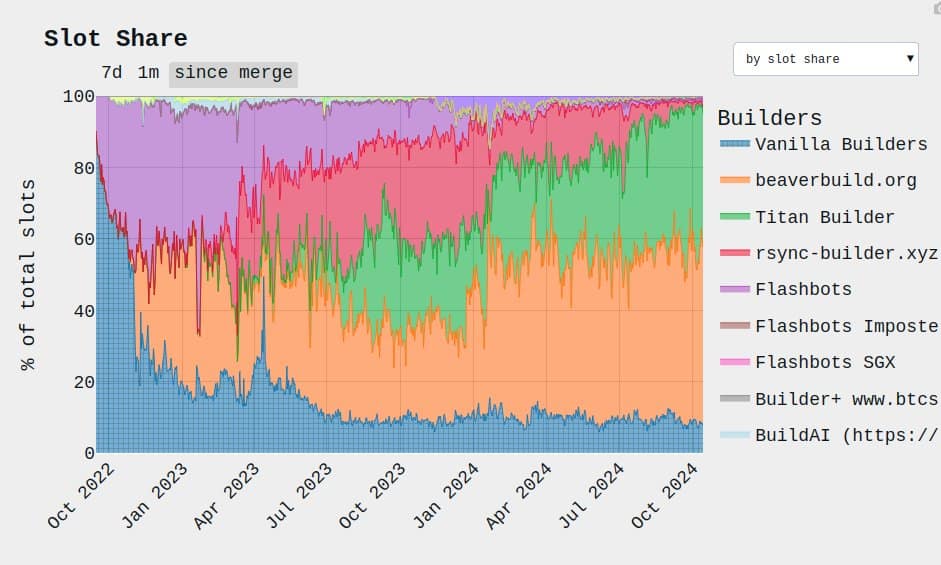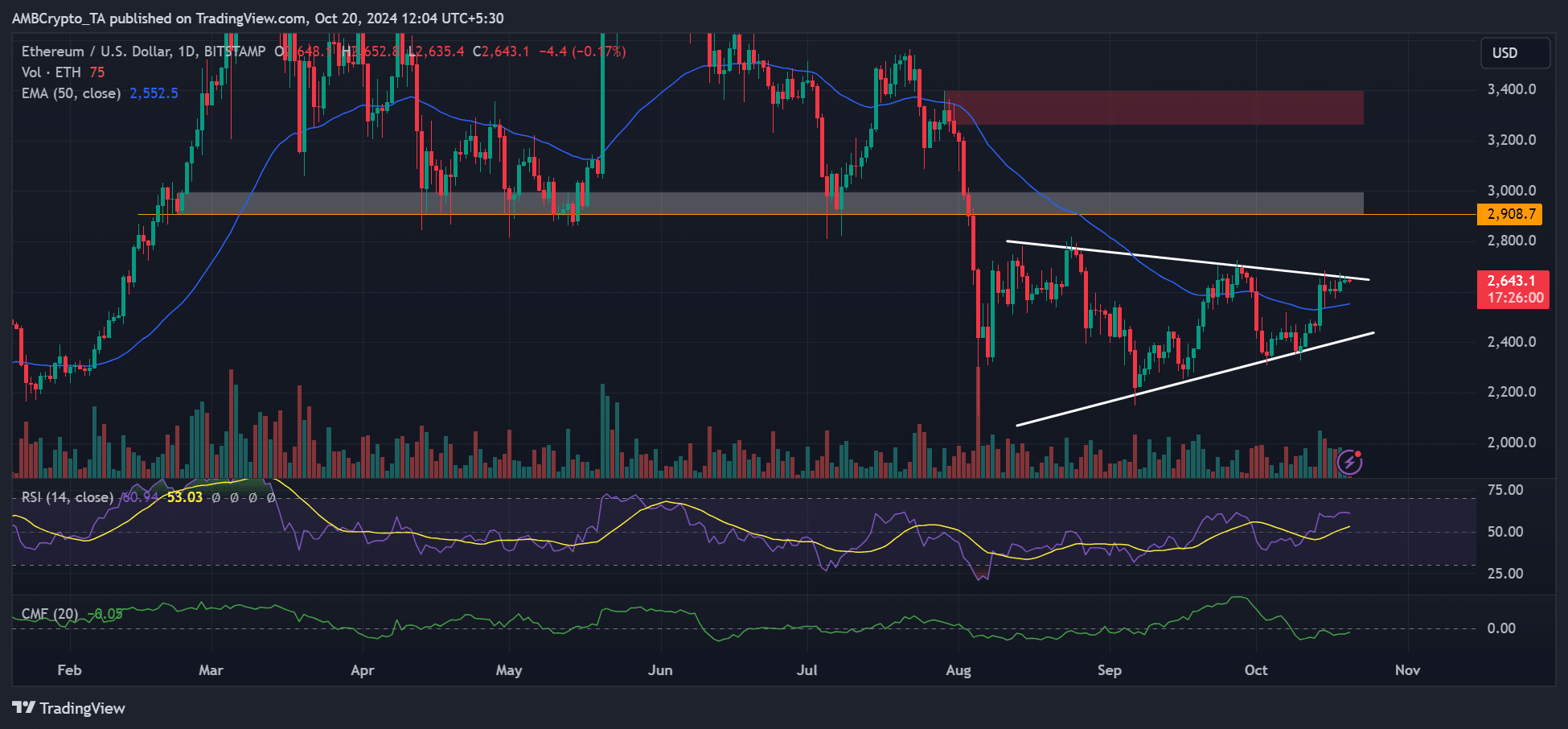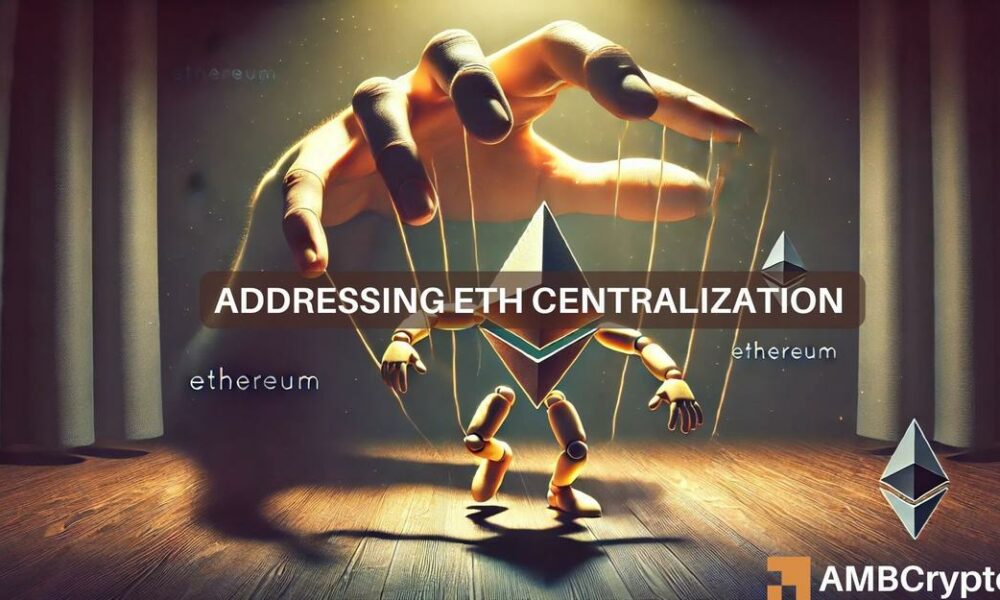- Vitalik Buterin marked block creation and staking as a key centralization risk.
- The team was exploring several solutions to address these risk factors.
Vitalik Buterin, co-founder Ethereum [ETH]investigated the network centralization risks and potential solutions the team was considering.
Buterin pointed out that block creation and staking are key risk factors for centralization. To put the dire scenario into perspective, two entities (Beaver and Titan) almost 90% of ETH block In October.
What can go wrong with such a level of centralization?


Source: Buterin
Buterin also emphasized that the dominance of large shareholders could increase the risk of network attacks and censorship. he said,
“This (large staker advantage) increases the risk of 51% attacks, transaction censorship, and other crises. In addition to the centralization risk, there is also the risk of value extraction. A small group captures the value that should have been passed on to them.”
Possible solutions
Since last year, the above risks have increased due to the increased use of specialized algorithms (MEV, Maximum Extracted Value) by block proponents to maximize profits.
“Large actors can afford to run more sophisticated algorithms (“MEV extraction”) to generate blocks, resulting in higher revenue per block. ”
Regarding the problem of block creation, Buterin cited the inclusion list approach as a possible solution, where proposers and builders share the task.
“The main solution is to further subdivide the block generation task: return the task of selecting transactions to the proposer (i.e. staker), and allow builders to choose the order and insert some of their own transactions. This is what the inclusion list is trying to do.
The team considered various nuances of the inclusion list with different trade-offs and planned to settle on a single approach.
In terms of staking risk, 34 million of the 120 million circulating supply is staked, which is approximately 30% of ETH in supply.
According to Buterin, the ongoing increase in staking could potentially make one Liquid Staking Token (LST) more dominant, reducing liquidity.
To solve this, the team considered reducing staking rewards and putting a cap on the amount of ETH that can be staked.
Overall, Buterin reiterated his intention to prevent the extraction of value from users at the expense of central control and to continue to limit the network's progress toward centralization.
Hours after the update, ETH sentiment surged positively, suggesting that market participants are hopeful about the altcoin’s price outlook.


Source: Santiment
It remains to be seen what solution the team will settle on to address the issues raised, but this move could increase the value of ETH in the long run.
At the time of writing, ETH price was $2.6k, below the major hurdle from the bullish target of $2.9k.


Source: ETH/USD, TradingView

